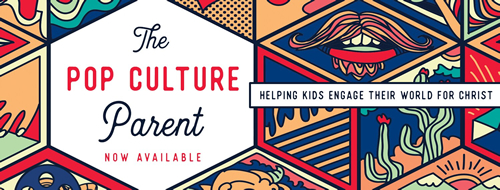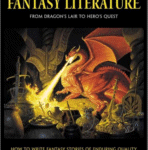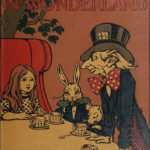Guest Blog: C. S. Lakin, Part 2
Fairy Tales As a Sub-genre of Fantasy, Part 2
by C. S. Lakin
 My introductory post discussed the power of fairy tales and the way fairy tale structure is different from other fantasy sub-genres. The key point is that the traditional fairy tale structure mirrors the reality of our existence—the tale centers around an impossible happiness that is contingent upon a simple but often inexplicable requirement.
My introductory post discussed the power of fairy tales and the way fairy tale structure is different from other fantasy sub-genres. The key point is that the traditional fairy tale structure mirrors the reality of our existence—the tale centers around an impossible happiness that is contingent upon a simple but often inexplicable requirement.
And that’s what is so fantastic—that the same rule applies to restoration. Just as our first parents’ happiness rested on an incomprehensible condition (you must not eat of the fruit…), our eternal happiness rests on one simple condition: Whoever believes in the Son of God will be saved. God doesn’t make things complicated—we do. He gave Adam and Eve a simple, clear condition. Had they obeyed, they wouldn’t have lost God.
So, we see in true fairy tales, the hero or heroine off on a journey where they have to make a choice. There is always a choice, always free will. The choice will involve some incomprehensible reward of happiness, yet will rest on some incomprehensible condition. When we read, for example, how Frodo must enter into Mordor against all odds and destroy the ring in the fires of Mount Doom, it is an incomprehensible task. It is a simple one, but nearly impossible. Yet, all the happiness of Middle Earth depends on his accomplishing this task.
Fairy tales are filled with impossible tasks, yet it is the celebration of the human spirit—of dignity, honor, resolve, love, and often sacrifice—that sends the hero out on a journey to tackle that task head on. This is our history. The story of God becoming man and setting out on a difficult journey to fix what was wrong. It cost him pain, humiliation, sorrow, suffering—facing a seemingly impossible task, but he did it and declared, “It is finished.” The huge, long, epic fairy tale that began in the garden of Eden finished at the cross. Everything once scattered and lost was now gathered and found.
This is what inspired and fired me up to write these fairy tales. I wanted to take traditional fairy tale elements that are deeply ingrained in our memories and hearts and weave them into new tales for all ages. Tales that deal with high concept, with epic themes, not just be entertaining stories. The characters in these books struggle internally as well as externally. They question their place in the world, their dreams, their hopes. Well, they are a lot like us. And they have to overcome their fear and human frailty, trusting in some inner strength and help from heaven to succeed in the end.
What I love most about writing fairy tales is being able to use metaphor and imagery. In The Wolf of Tebron, the themes of waking and dreaming are explored from all angles. Joran, in his search for his wife, held captive by the Moon, realizes he is a dream in the mind of the One who dreams all existence into being. And that he learns he can live his dream while wide awake. In The Map across Time, the kingdom is under a curse that makes men do evil. If this curse isn’t counteracted, hope is lost. This is the metaphor for our lives under sin’s curse. And blood is used heavily as a symbol in this book to tie in with redemptive and saving power. In The Land of Darkness, the symbols of light and darkness are explored. People wander lost in the Land of Darkness, but they don’t know they are lost. And they don’t know they are in the dark. A perfect metaphor for our existence. Only by crossing an invisible bridge—one that can only be seen with eyes of faith—can our heroes get out of the Land of Darkness. I won’t give any spoilers here—you will just have to read the book to learn what the bridge really is.
I have presently completed the fourth fairy tale—The Unraveling of Wentwater. I got the idea from Chesterton, from that line in Orthodoxy where he says “a word is forgotten and cities perish.” In this tale, an entire village unravels one word at a time, as every word in existence begins to disappear and, along with it, the objects they give meaning to. The theme of Wentwater has to do with mercy versus justice, and explores the futile pursuit of knowledge that leaves mercy behind. “The wisdom of the wise perishes”—literally!
The title of the series relates to the seven “gates of heaven” that are set up in different locales in this fantasy world. Heaven places these stone structures on earth to prevent evil from getting a stronghold into the world of men. Keepers were assigned to watch over the sites, but over time, the sites have been either abandoned or torn down or destroyed. Evil, then, had free rein into the world. Each book of the proposed seven-book series features a different “gate” in a different locale, where the story interweaves with this structure. Just picture Stonehenge and you’ll have an idea of what these look like.
I’m excited to continue the tradition of C. S. Lewis and Narnia. I feel there is a void left in his wake, with so many yearning to read fairy tales that give hope and inspire and work on many levels of symbolism. Hopefully, The Gates of Heaven collection of tales will fill that void and brighten the hearts of readers for a long time!











































[…] This post was mentioned on Twitter by guess who… and Susanne, Susanne. Susanne said: http://bit.ly/i5nq6f Read part two on Fairy Tales as a genre and why they're significant to us: Spec-faith blog. […]
I’ve always been drawn to Fairy Tales. I love them. In fact, I still have my Grimm’s from childhood stashed in my book case. Sacrafice, love, honor, and fighting evil are my favorite themes.